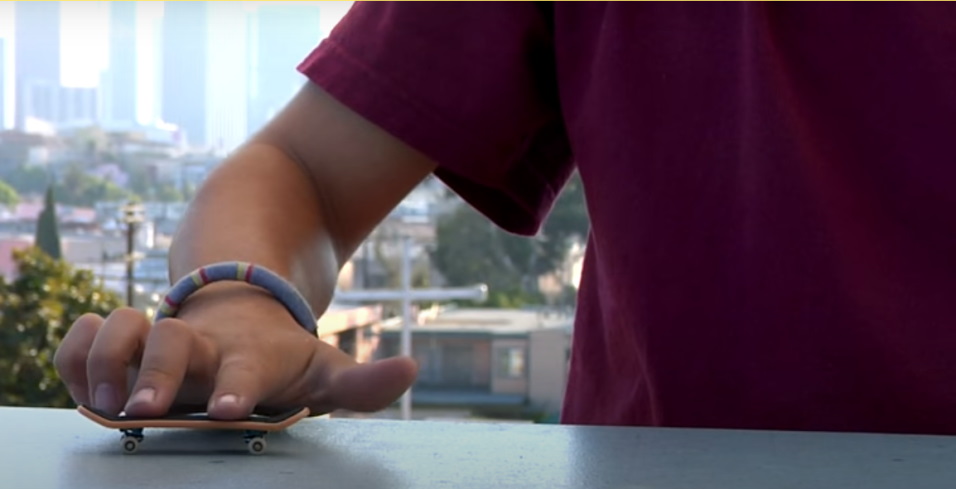They were initially meant to be cool designer keychains for skateboard aficionados, but now they are taking the world of skateboarding by storm… in a miniature way! Fingerboards allow players to perform the same stunts normal skateboarders do, but in a safer (and maybe even better) manner. And why is that? The name says it all – fingerboard – it’s a mini skateboard made for your fingers!
For those who are not into the fad yet, let Mr Toys introduce you to the action-packed world of FINGERBOARDS, also known as finger skates or finger skateboards! Read on and discover how the simple fingerboard evolved into a popular toy for a community of hobbyists and sports enthusiasts.

The Origin
No toy company can claim exclusivity when it comes to the fingerboard’s origin. In fact, as early as the 1970s, older kids were crafting their own miniature skateboards in their households, They were using simple materials like cardboards, coffee stirrers, wheels and axles from toy trains, Hot Wheels, and Match Box cars.
Becoming A Toy!
The craft of making miniature skateboards got hit by commercialisation in the 1980’s, and many businesses started to sell them. The thing is – they weren’t marketed as toys but as keychains. The target consumers were skateboard enthusiasts but people from all walks of life got fond of the designs, that they became hot fashion accessories.
The Virtual Skateboard
Eventually, kids and skateboarders began using the mini-skateboards to perform tricks and stunts with their fingers the way experts do on normal-size skateboards. However, they weren’t doing it as a stand-alone sport in itself (like it is today), but more like a virtual practice and visualisation of the spins, jumps, and other techniques they can do with the “real thing.”
Enter the Tech Deck!
This story is an example of how adults can learn from and be inspired by children.
Year 1998… Prevented from skateboarding outside because of a rainy day, 12-year old Steven Asher decided to make his own miniature skateboard using a cardboard, so he could at least do what he loved most even with his fingers. His dad, Peter Asher (who was a toy industry veteran), took notice. This gave him the idea for the mini-skateboard toy!
With the guidance of his 12-year old son and the help of his friend and former toy merchant, Tom Davidson, Peter was able to design and developed realistically looking skateboards made from wood and die-cast metal – in miniature forms! Two years after, these authentic skateboard mini-clones would kick-off a heap of toys and merchandise under the brand name Tech Deck.
Today, Tech Deck is widely known for its collectable fingerboards that are well-loved by kids and adult hobbyists alike!
See our range of fingerboards and related merchandise by Tech Deck!
From Craft to Fashion... to Sports Competition
The fingerboarding craze began to boom in the 2000s, with competitions and exhibitions being organised in different parts of the world. What some thought was a mere diversion for people who couldn’t do or are afraid of doing extreme stunts on normal-size skateboards is now a sports game with its own community of cult followers spread all across the globe.
Indeed, the fingerboard has come a long way from being a craft hobby to being a fashion trend with its designer keychains, and now as a specialised sport independent of its parent skateboard.
Last but Not Least
If you want a safer way for your child to enjoy doing some spins and jumps without the risk of injury, the fingerboard is the way to go. Introduce your child to the joy and thrill of action-packed fingerboarding! Who knows? You might see them competing in the Olympics someday.

 Benefits of Playing with VTech Toys
Benefits of Playing with VTech Toys
 From Toy Trucks to Tech: The Best Toys for Boys 2024
From Toy Trucks to Tech: The Best Toys for Boys 2024
 The Best Bluey Toys in 2024
The Best Bluey Toys in 2024

